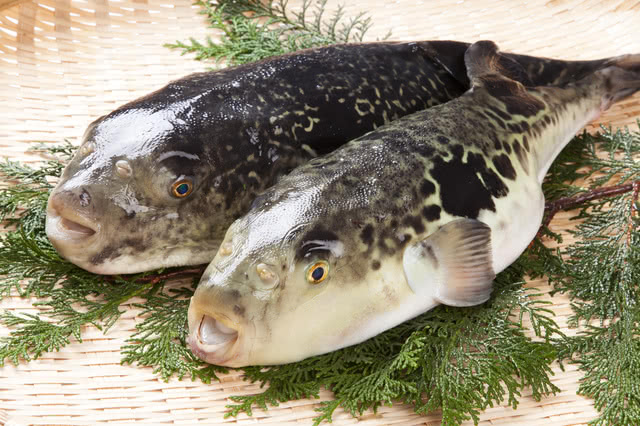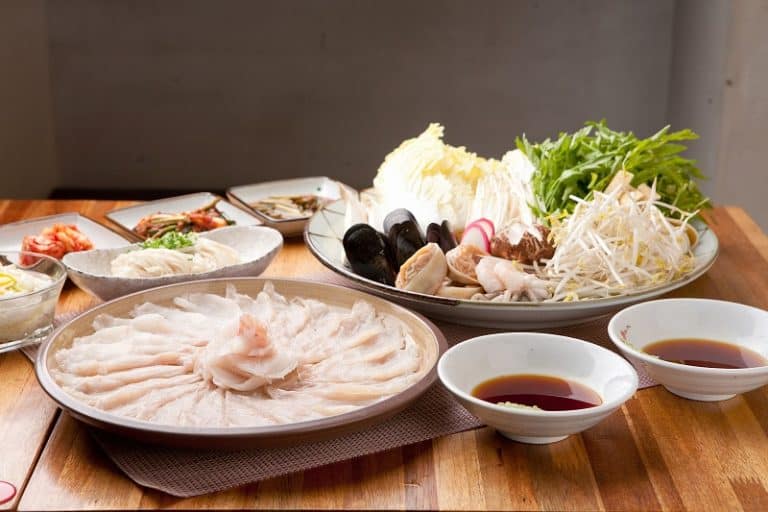
Fugu taste skin#
The gelatinous quality of fugu skin is exploited in other dishes. Kawasashi is a popular appetizer taken when drinking sake. Parboiled and finely sliced, fugu skin is known as kawasashi. It’s served with a splash of lemon juice, yuzu, or ponzu.įugu lovers claim that the meat from around the fish’s mouth is the best for deep frying.įugu skin is popular when deep-fried and served in salads, or as slices to dip into the sauce.


Karaage has a crunchy coating with the flesh inside remaining soft. This calls for a garnish of ponzu sauce, grated ginger, or tangy daikon radish.įugu meat rolled into balls, coated in flour and deep-fried is known as karaage. The chef may quickly sear the fillet to brown the outside but leave the interior raw. You’d think that an almost tasteless fish wouldn’t have a great place in the kitchen, but there are dozens of ways to cook fugu, and chefs jealously guard their recipes. It’s chewy when raw, but when cooked, its flesh is delicate.Ī very lean fish, fugu needs minimal cooking, or it will become unpleasantly tough. Its texture is something between sea bass and squid. In Japan, that’s one of the reasons fugu is sought after. Some say its taste is so subtle that it doesn’t bring seafood to mind at all. Bitter orange or sudachi citrus fruit play valued supporting roles with their seasonal fragrance.Simply Healthy Family may collect a share of sales or other compensation from the links on this page.įugu, also known as blowfish or puffer fish, has a mild, clean flavor. It may be artfully modelled on a chrysanthemum or a peony or arranged auspiciously like a crane as a wish for long life. Cut with a dedicated knife, the raw fugu is sliced so thinly that the pattern on the plate can be seen through it. Usuzukuri (thinly-sliced sashimi) is where the skill of the fugusashi (fugu sashimi) artisan truly shines. Exceptionally versatile, fugu can be served as jellied broth (nikogori) or sashimi, or it can be grilled, simmered or fried. Letting them sit overnight enhances the fish’s umami as well as the pleasing suppleness characteristic of fugu. The secret to the delicious taste of fugu is that it is less fatty than other white-fleshed fish, with higher concentrations of the umami components glutamic acid and inosinic acid. Fugu is a star on menus not only at speciality shops but also at restaurants ranging from kappo (counter-style restaurants serving traditional Japanese cuisine) to ryotei (traditional Japanese restaurants). A proverb advises to start eating torafugu when the bitter orange gains colour and to stop when the rapeseed flower blooms. The season for torafugu (Japanese pufferfish or tiger pufferfish) is said to be from the autumn equinox to the spring equinox.

The practice of eating fugu soon spread nationwide. The prohibition on eating fugu was lifted during the Meiji period (1868–1912 ), when the prime minister at that time, Ito Hirobumi, ate fugu in Shimonoseki and became so enamoured with it that he began discussions with the governor of Yamaguchi Prefecture to lift the restriction. The desire to enjoy the delicious flavour of fugu despite the dangers gave rise to a saying about perilous predilections: ‘I want to eat fugu, but I value my life’. Despite this edict, fugu remained stubbornly popular with everyone from the common folk to intellectuals, even appearing in haiku and ukiyo-e prints. During the Azuchi-Momoyama period (1568–1600), however, the de-facto ruler of Japan, Toyotomi Hideyoshi (1537–1598 ), banned the consumption of fugu because so many people kept getting poisoned by it. Fugu bones have been unearthed in shell mounds from Japan’s Jomon period (approximately 14,000 to 1000 BC ). We know that people have been eating fugu for thousands of years. People have been eating fugu for a long time.


 0 kommentar(er)
0 kommentar(er)
